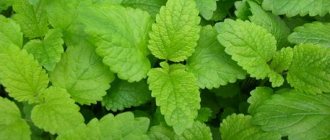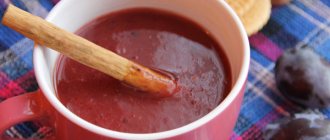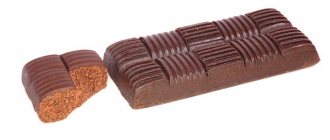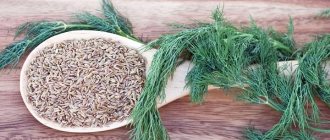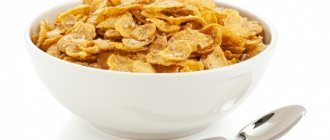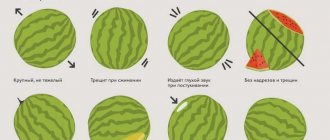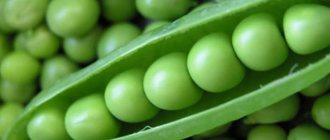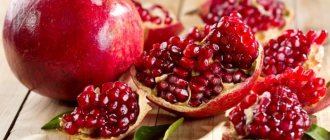Chamomile is an amazing and beautiful flower that has various healing properties. Due to the large number of useful qualities, the plant is increasingly being used not only in folk medicine, but also in official medicine.
So, chamomile is:
- anti-inflammatory,
- antiseptic,
- restorative,
- antifungal,
- painkiller,
- calming,
- sedative,
- antibacterial.
The flower can also be used in the treatment of diseases of the liver and gastrointestinal tract. In order to cure or weaken any disease, people drink teas, tinctures and decoctions.
READ ALSO: What tea can a nursing mother drink?
Benefits of chamomile tea
The most common remedy is chamomile tea. This is due to the fact that everyone can drink it: children, adults, and even pregnant women. As a rule, tinctures contain alcohol, which limits the possibility of its use by a number of people.
Chamomile tea is also very popular among women breastfeeding. After its use, a normal, regular menstrual cycle is established, the problem of insomnia is solved, and excess fluid is removed from the body thanks to its diuretic effect.
The latter leads to a decrease in appetite, and therefore to a decrease in weight. This property of chamomile tea will undoubtedly delight girls who want to lose weight. In addition, this drink perfectly helps to normalize your emotional state.
Chamomile tea can be used by new mothers to treat:
- cystitis,
- colds,
- intestinal diseases,
- acne, burns and other skin damage,
- thrush.
Breastfeeding experts believe that such teas can help improve lactation by increasing the volume of circulating blood. However, if a nursing mother has difficulty producing enough milk, this does not mean that she should only drink chamomile tea during the day. After all, this is a medicine, not an ordinary drink. You should drink it strictly according to the instructions and no more than three glasses per day. It is not recommended to use chamomile mixtures and tinctures during breastfeeding, as they contain too high a concentration of excipients, not to mention the fact that they may contain alcohol. Naturally, their use can negatively affect lactation. There may be less milk or it may disappear altogether.
READ ALSO: Is it possible to drink kvass while breastfeeding?
Unique properties of chamomile
Based on the medicinal plant, homeopathic medicines and dietary supplements are made for the treatment of inflammatory diseases and nervous disorders. The herbal mixture is used to brew tea. All of the following are beneficial to the body:
- Normalization of psycho-emotional state, fight against insomnia and overstrain. After giving birth, a woman is recommended to drink chamomile infusion before bed to reduce the risk of developing depression. Medicinal substances have a sedative effect on the nervous system. When ingested through baby milk, the active compounds help the baby sleep when experiencing discomfort from teething or colic.
- Elimination of dermatological diseases. Concentrated tea reduces the risk of cracks in the nipples, prevents infection of open wounds, and accelerates the process of tissue regeneration. If a woman experiences acne after pregnancy due to hormonal imbalance, chamomile eliminates acne and restores the functioning of the endocrine system.
- Used as an additional therapy for diseases of the digestive tract: hypoacid gastritis, colic in a newborn, increased gas formation, flatulence and bloating. This effect manifests itself both in the body of the mother and the baby. The child receives active substances along with milk.
- Phytoncides in chamomile have bactericidal and antiviral effects, so these products are considered effective in the fight against colds. Decoctions eliminate dry cough, runny nose and nasal congestion. They alleviate the condition of chronic sore throat and pharyngitis.
If you regularly consume chamomile when feeding your baby, you can prevent diseases of the urinary system. Decoctions are drunk for toothaches and swelling of the gums, as well as teething in infants.
We recommend that you familiarize yourself with the properties of St. John's wort oil and its use
How to prepare a chamomile decoction?
To prepare, we need one tablespoon of dry herbs and one glass of boiling water. The flowers should be poured with boiling water and allowed to brew for 15-20 minutes, and then strain through cheesecloth or a strainer. As a rule, this drink is used for external use. For example, it can be used to gargle and rinse the mouth for colds, as well as to wash wounds. In addition to this, chamomile infusion has a very good effect on hair. It strengthens and fills them with shine, so it will be very useful for mothers with problem hair.
By the way, there are very often complaints of hair loss during lactation (we recommend reading: why does hair loss occur during breastfeeding?). This usually goes away on its own within a year. However, doctors recommend not ignoring the disease and rinsing your hair with chamomile at least 2 times a week. This way you will soothe your scalp and strengthen your hair follicles.
Can a mother drink chamomile while breastfeeding?
Home › Herbs
01.10.2019
Many women wonder whether it is possible to drink chamomile while breastfeeding (BF). During the period of feeding a child, it is not prohibited to use decoctions and tea based on medicinal plants. Active components prevent the development of inflammatory processes, normalize the psycho-emotional state and relieve digestive problems.
Based on the medicinal plant, homeopathic medicines and dietary supplements are made for the treatment of inflammatory diseases and nervous disorders. The herbal mixture is used to brew tea. All of the following are beneficial to the body:
- Normalization of psycho-emotional state, fight against insomnia and overstrain. After giving birth, a woman is recommended to drink chamomile infusion before bed to reduce the risk of developing depression. Medicinal substances have a sedative effect on the nervous system. When ingested through baby milk, the active compounds help the baby sleep when experiencing discomfort from teething or colic.
- Elimination of dermatological diseases. Concentrated tea reduces the risk of cracks in the nipples, prevents infection of open wounds, and accelerates the process of tissue regeneration. If a woman experiences acne after pregnancy due to hormonal imbalance, chamomile eliminates acne and restores the functioning of the endocrine system.
- Used as an additional therapy for diseases of the digestive tract: hypoacid gastritis, colic in a newborn, increased gas formation, flatulence and bloating. This effect manifests itself both in the body of the mother and the baby. The child receives active substances along with milk.

- Phytoncides in chamomile have bactericidal and antiviral effects, so these products are considered effective in the fight against colds. Decoctions eliminate dry cough, runny nose and nasal congestion. They alleviate the condition of chronic sore throat and pharyngitis.
If you regularly consume chamomile when feeding your baby, you can prevent diseases of the urinary system. Decoctions are drunk for toothaches and swelling of the gums, as well as teething in infants.
While breastfeeding, you can drink chamomile up to 1-2 times a day. The medicinal plant is considered hypoallergenic and does not cause harm to health in the absence of contraindications. Therefore, the herbal mixture is safe for hepatitis B. It is taken as a prevention of postpartum depression, to relieve mental and physical stress, and eliminate swelling.
For children under one year of age, bathing in a medicinal decoction is allowed. It is mixed with water in a ratio of 1:5, and it is forbidden to add foam-creating agents. The decoction allows you to get rid of prickly heat, eliminate itching and diathesis, and accelerates the healing of the suture after cutting the umbilical cord.
When a woman uses chamomile tea, the risk of developing infectious and inflammatory diseases in her and her child is reduced. It is forbidden to take medicines based on the plant, because...
they are considered dangerous for newborns.
In addition to chamomile, they may contain synthetic or highly allergenic natural ingredients that provoke an allergic reaction in the child and create a burden on the liver.
Before using the product, the mother must make sure that the child tolerates the herbal product well.
The child's body has not previously encountered the active compounds in chamomile, so it is impossible to predict how it will react to the substances. To avoid the development of allergies and anaphylactic shock, it is recommended to start drinking tea in small doses. A woman must act according to the following algorithm:
- For the first time, 50 ml of decoction is allowed.
- The mother should closely monitor the baby's condition for 24 hours. During this period, allergy symptoms appear.
- For skin redness, rashes, vomiting and respiratory failure, it is necessary to completely exclude chamomile tea from the diet. It is also not recommended to take the product if a woman feels nauseous.
In some infants, the allergic reaction manifests itself in a non-standard way: watery eyes, runny nose and cough. These symptoms are similar to a cold, but they do not cause an increase in body temperature.
If there is no negative effect, you can drink chamomile according to the following rules:
- A woman brews 1 tsp. dried flowers or ready-made sachet 250 ml hot water.
- You can leave the product for no more than 15 minutes. If you get a concentrated solution, the risk of developing allergies in a newborn increases.
- A nursing woman is allowed to use the product 2 times a day, provided that the lactation process is proceeding normally. It is recommended to drink the product in the evening and before bed. If not enough milk is produced, drink the solution once a day at night. The duration of therapy is 2 weeks, then take a break for 7-14 days.
- Children over 8 months can be given chamomile tea in a small dosage. For the first time, the child is given 1 tsp. decoction, further use of up to 50 ml per day is allowed.
Many women ask whether chamomile can cause harm. Medicinal plants often have a list of contraindications and side effects because they cause a negative reaction from the immune system. You should not drink chamomile tea if the following negative effects are observed in the mother’s body:
- hyperemia;
- skin rashes;
- increased acidity of gastric juice;
- migraine;
- stool disorder;
- the amount of milk decreases;
- Pain in the kidney area and problems with urination appear.
We invite you to find out what vitamins are in garlic
Such effects are rare. Their development is provoked by the abuse of the decoction or taking the drink in high concentrations. It is not recommended to drink the drug while undergoing drug therapy.
It is prohibited to include chamomile in the diet in the following cases:
- ulcerative-erosive lesions of the stomach and duodenum;
- individual intolerance to the product;
- renal failure;
- mental disorders.
Conclusion
When breastfeeding, it is not recommended to consume more than 500 ml of chamomile infusion or tea per day. It is allowed to use the products 1-2 times a day for 2 weeks.
After 14 days, the woman should take a break so as not to provoke the development of an allergic reaction in the baby.
When drinking tea, the baby does not need to be switched to artificial feeding if he tolerates the new product in the mother’s diet well.
To eliminate the risk of allergies, the woman takes 50 ml of the decoction for the first time and monitors the child’s condition throughout the day. If no negative symptoms appear after 24 hours, chamomile can be used regularly.

Chamomile during breastfeeding Link to main publication
In the standard treatment model, practitioners often advise pregnant and breastfeeding women to avoid herbal tea. But the truth is that most herbs are safe to eat, and chamomile is one of them.
Evidence-based medicine doctors are not trained in the specifics of herbs and cannot properly counsel women on what is safe. But don’t rush to completely exclude it from your diet.
Chamomile has many benefits for breastfeeding that can help both women and their babies.
Chamomile (or Matricaria recutita) is the common name used for several aromatic plants in the Aster (Asteraceae) family. The main types of chamomile are German and Roman.
These species are known for their ability to be made into tea, which is one of the most widely used types of CAM therapy to improve sleep and treat insomnia.
The herb's sedative effects may be due to a benzodiazepine type of compound in the flower head.
Chamomile contains beneficial properties
Chamomile is a very popular remedy in alternative medicine. Its main chemical components are bisabolol, chamazulene and flavonoids: apigenin and luteolin. Has the following properties:
- anti-inflammatory;
- immunostimulating;
- antianemic;
- antiallergic;
- painkiller;
- bactericidal;
- antispasmodic;
- vasoconstrictor;
- antibiotic;
- carminative;
- digestive;
- cicatricial;
- choleretic;
- anthelmintic;
- sedative.
Consuming chamomile may help relieve menstrual pain or dysmenorrhea, premenstrual fatigue, and headaches. Promotes regular menstruation in case of frequent delays and relieves all types of menstrual discomfort.
Taking 100 mg of chamomile 3 times a day for two menstrual cycles reduces the overall intensity of symptoms and reduces anger and irritation.
With its ability to boost immunity, it helps prevent infectious diseases by strengthening the immune system's ability to resist disease. Its therapeutic properties alleviate respiratory diseases such as cough, cold, difficulty breathing, tonsillitis, influenza, bronchospasm in asthma and sinusitis.
Chamomile has been used for centuries, both internally and topically, to treat many conditions, especially skin inflammation (dermatitis).
Its relaxing, anti-inflammatory, antiseptic and wound-healing properties help to quickly eliminate skin problems such as varicose ulcers, wounds, burns, bites, allergies and other skin ulcers. Chamomile cream is as effective as hydrocortisone cream 0.25% in the treatment of atopic eczema.
Its positive properties include the ability to fight harmful bacteria such as Staphylococcus aureus, which causes infection of wounds and other skin diseases.
Chamomile tea has a sedative effect on the mind and body, helping to calm and relax.
When breastfeeding, you should carefully monitor the baby's reactions to the introduction of foods.
The herbal infusion of chamomile is often trusted to relieve pain or muscle spasms and relieve gastrointestinal inflammatory conditions. Some studies show that chamomile inhibits Helicobacter pylori, which causes stomach ulcers.
It has been used for many years as a traditional remedy to treat colic, especially in children, diarrhea, stomach cramps, gas, intestinal cramps, irritable bowel syndrome, indigestion, stomach ulcers and gastrointestinal disorders.
How to use decoctions for candidiasis
During thrush, it is allowed to carry out a procedure such as douching with chamomile. It will help relieve pain and itching, and also disinfect and heal microdamages of the mucous membrane and tissues.
The decoction must be warm during douching. This procedure lasts approximately twenty minutes. Before starting each new treatment, the syringe must be disinfected. In addition, she is allowed to treat the external genitalia, as well as make lotions, for example, by carefully applying a cotton pad/tampon to the sore spot.
How to prepare chamomile tincture?
To prepare chamomile tincture, you will need five teaspoons of the herb, which, in turn, must be poured with one glass of cold boiled water. This drink should infuse for 8 hours. It is best to cook in a thermos in the evening so that it is ready by morning. Typically, chamomile tincture is used internally. It helps with headaches, fatigue, stomach cramps and sleep disturbances. However, you shouldn’t overuse it; drinking it every day can have the opposite effect. Do not forget to take breaks based on the individual characteristics of the body. If you are in doubt about the schedule for consuming and combining tinctures of various herbs, it is better to consult your doctor first.
How to brew chamomile for infants?
If a child has problems related to digestion, the pediatrician may advise him to brew tea or chamomile tincture. Accordingly, every mother should know how to properly prepare and use such drinks. First, you need to check your baby’s reaction to chamomile in order to find out if he, who is breastfed, is allergic to this plant. Allergies can manifest themselves in the following:
- the baby's tears began to flow,
- nasal discharge appeared,
- having trouble breathing,
- a rash appeared on the skin,
- eyes or lips begin to swell,
- Nausea and vomiting appeared.
If at least one of the above symptoms appears in a baby, then he is strictly forbidden to drink chamomile drink! Also, it should not be given to a baby if his mother is allergic to the plant. The disease can be transmitted to a child at the genetic level.
When drinking chamomile tea, its concentration should be diluted by half. You should start giving it to your baby in small quantities. If the drink is used to eliminate problems with the gastrointestinal tract, then the child should drink it three to four times a day on an empty stomach, one teaspoon. If you want to use this tea to cure a cold in your baby, then you should give it after meals. Do not overdose. It may make the child feel sick.
Dr. E.O. Komarovsky generally does not recommend giving a baby infusions with herbs up to a year. Starting from the second year, chamomile can already be given, in his opinion, but its dose should not be more than fifty milliliters per day.
How to prepare chamomile for bathing?
To bathe, ten tablespoons of flowers should be poured with one liter of boiling water. This decoction should infuse for thirty minutes. After this, it can be added to the bath. In order to find out if a child has allergies, before bathing you need to drop a chamomile infusion on the baby’s leg or arm. If there is no negative reaction, then you can start washing the child.
Benefits and indications for the use of chamomile
Caring for a baby takes a lot of energy. Lack of sleep accumulates. At the same time, the quality of sleep decreases. He becomes restless. Mommy is visited by disturbing thoughts that prevent her from fully relaxing.
Chamomile decoction helps cope with insomnia and increased excitability. During the cold season, the medicinal plant is used as an antiseptic. Treat with it:
- pharyngitis;
- tonsillitis;
- cough;
- runny nose.
With the help of chamomile, dermatological problems of mothers and babies are successfully solved. A strong decoction is used to treat cracks in the nipples, wounds and inflammation on the skin.
Chamomile helps with digestive problems:
- bloating;
- diarrhea;
- colic.
Rinsing the mouth with chamomile is prescribed by dentists. The solution relieves inflammation, reduces toothache, and treats sore gums. An infusion of this plant treats diseases of the genitourinary system and cervical erosion.
If a nursing mother drinks chamomile tea, allergic reactions in babies are rare, but do occur. Each baby has its own symptoms of individual intolerance, they manifest themselves:
- redness of the skin, rash;
- vomiting;
- liquid snot;
- the appearance of swelling of the oral mucosa and eyelids.
Stop using the medicinal drink immediately if any of the following side effects occur:
- headaches;
- feeling of weakness;
- dizziness;
- increased irritability.
A contraindication to the use of chamomile in any form is a predisposition to frequent diarrhea. The medicinal herb has a strong relaxing effect on the intestinal muscles. The mother may drink the tea, but the baby will have diarrhea.
When should you avoid chamomile?
Unfortunately, chamomile is not always beneficial. Especially for young children, some of its seemingly beneficial properties can turn out to have the opposite effect. So, let's look at the disadvantages of the plant:
- Chamomile has a fairly strong laxative effect, so it should not be used by those who have increased intestinal sensitivity, as well as hyperkinesia.
- Under no circumstances should people with high acidity in the stomach drink it, otherwise the secretion of bile in the intestines may increase, and this, in turn, can provoke pancreatitis.
- Despite all the benefits, it should not be consumed in large quantities during breastfeeding. It can negatively affect the milk production process: reduce the quantity or quality of milk.
- Therefore, it should not be used if you have allergies, which can manifest as itching and rashes on the skin. In order to check this, you need to try drinking chamomile in small quantities and observe the reaction.
READ IN DETAIL: how to brew chamomile for bathing a newborn?
Useful properties and applications
The pharmacy offers nursing mothers teas (for children and adults) that contain chamomile. This suggests that the plant is safe for the baby’s health.
Chamomile tea helps mom cope with postpartum depression. It helps you fully relax and unwind.
For a newborn
Chamomile does not have any harmful effects on the child. In caring for an infant, it is used externally:
- the infusion is added to the bath while bathing, it softens the skin, reduces inflammation caused by diaper rash;
- The eyes are washed with a strained decoction if purulent compartments appear in them after sleep;
- clean the nose from crusts with a cotton swab dipped in chamomile infusion.
The doctor prescribes chamomile tea to newborns in three cases: when the baby has problems with stool, during teething, with poor sleep and increased excitability. Before the first use (external, internal), a test is done for an allergic reaction.
During daytime sleep, a cotton pad soaked in chamomile infusion is placed on the baby's hand. Any reaction indicates an allergy: redness, blisters, rashes. In this case, the mother is contraindicated to take chamomile infusions, decoctions, and teas internally. External use is permitted. It will not harm the baby, since the active substances will not pass into breast milk.
We invite you to familiarize yourself with Eggplant Albatross
